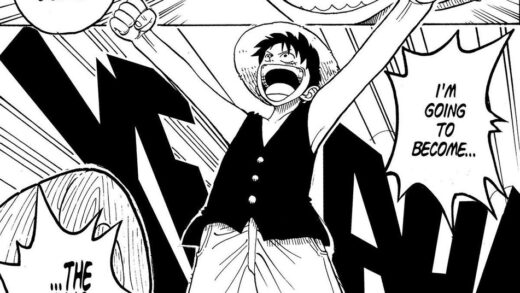The following is an unofficial English translation of a Japanese article about the history of light novels by a group called the Light Novel Research Institute. It is presented here for educational and research purposes only. The original Japanese text can be found here. This is an edited machine translation, so some titles or names may be incorrect.
Summary of the 2000s
In the first half of the decade, “Shakugan no Shana” and “The Melancholy of Haruhi Suzumiya” were popular for their stories that introduced the extraordinary into the ordinary. In the latter half of the period, “Student Council’s Discretion”, “My Little Sister Can’t Be This Cute!”, and “I Don’t Have Many Friends” became popular as everyday stories without fantasy elements.
The latter two works are based on very familiar themes such as rebuilding bonds with one’s sister and training to make friends, and are thought to reflect the fact that young people are having trouble forming good relationships with their families and friends.
In addition, works that mix fantasy and school stories, such as “Grimoire of Zero,” “Baka & Test – Summon the Beasts,” and “A Certain Magical Index,” have become hits.
What can be said about these hits is that they all sell “fun,” “moe,” and “bonds with family and friends. As long as they can provide these elements, it doesn’t matter if there are no fantasy elements.
Since the 2000’s, novels have become all about “moe” and romantic comedy, and the covers of these novels have started to feature illustrations of beautiful girls with an emphasis on moe. Honestly speaking, when I pass by the light novel section of a bookstore, the aura of moe is so overwhelming that it’s almost unbearable.
On the other hand, light novels have become closer and closer to general literature, with light novelist Kazuki Sakuraba winning the Naoki Prize, and “If a High School Baseball Girl Manager Reads Drucker’s ‘Management’”, a general literature novel with a light novel-like cover, becoming a bestseller.
Also, with the appearance of novels that teach economics, such as “Spice and Wolf,” the perception of light novels as “something worth reading” became widespread.
Table of Contents:
2000
Influential Circumstances

The “Light Novel, Magazine, and Entertainment Board” was established on the giant anonymous bulletin board site 2chan.
- A place to discuss light novels was created on the Internet, and the name “light novel” began to spread.
Representative works

“Kino’s no Tabi: The Beautiful World” [Kino’s Journey] by Keiichi Shigurezawa is published by Dengeki Bunko.
The series was a hit, selling over 6 million copies in total.
It is a short story about a girl, Kino, who travels to various countries with her talking motorcycle, Hermes.
It is an allegorical story that progresses quietly and unhurriedly, without any elements of moe or adventure. Rather than calling it a light novel, the expression “fairy tale for adults” is more appropriate.
In the world of light novels, stories like “Kino’s Journey” and “Sword Art Online” (written in 2002), both of which are survival stories, blossomed in the early 2000s and have been popular until the 2010s. This reflects the reality of the 2000s, where people may be killed by others if they stay idle and do not make any decisions.
However, unlike manga and general literature, cruel depictions tend to be avoided in light novels, and cheerful, everyday stories are becoming more mainstream than savvy stories.
Launch of a label
Shueisha launched “Super Dash Bunko”.
- When Super Fantasy Bunko was discontinued in 2001, the label expanded to include fantasy and science fiction.
- It is a SF light novel label. Some works are reprinted as general literary novels, and the target age group is slightly higher than junior high and high school students, making it more of a general literary label.
Fujimi Shobo launched “Fujimi Mystery Bunko” (~2009).
- At the same time, it started the Fujimi Young Mystery Award, a place to discover newcomers.
- At the same time, Fujimi started the Fujimi Young Mystery Award, a place to discover newcomers, and published light mysteries with characters and romantic elements, rather than existing mystery novels.
- He fostered famous writers such as Kazuki Sakuraba of “GOSICK” fame.
Honobu Yonezawa sent his debut novel “Hyouka” to the 5th Kadokawa Gakuen Novel Award in the Young Mystery & Horror category in 2001 because “I felt that the combination of light novels and mysteries had a future.
However, mysteries and light novels were not a good match, and the publication was discontinued after about eight and a half years. It is thought that this was because the heavy, difficult, and slow-developing style of mysteries did not match the “fun,” “exhilaration,” and “storytelling” demanded by readers of light novels.
After that, works that combine light novels and mysteries, such as “Mystery Solved at Dinner” (published on September 2, 2010) and “Biblia Koshodo no Jiken Techo” (published on March 25, 2011), which bridge the gap between light novels and general literature with the target age range set higher than that of the readers of novels, became hits. (March 25, 2011) were hits.
Trends in the Doujin Industry

Kinoko Nasu’s doujin PC novel game “Tsukihime” was released.
- The game became an exceptionally big hit for a doujin game, and became a commercial media mix.
- It became an explosive boom with its detailed setting, unique worldview, and characterization. As a vampire story, it had a great influence on later works.
The protagonist had a unique ability called the “demon eye of direct death,” which allowed him to see the death of his target as tangible information and kill any monster by cutting it off. This setting became popular, and “Shakugan no Shana”, “Toaru Majutsu no Index”, and other works that are called modern school xenobiotics became popular in light novels.
Nasu’s style can be traced back to the 80’s biographical novels of Hideyuki Kikuchi (Magic City (Shinjuku)) and Baku Yumemakura (Chimera Roar).
Crossing over into general literature

Kohei Kaidono, who has become a signature author of Dengeki Bunko, publishes the first installment of his case series, “The Case of the Dragon Slayer,” from Kodansha Novels.
This work is a fusion of fantasy and mystery. It is somewhere between light novels and general literature.
In the Taisho and early Showa periods, Ryunosuke Akutagawa left behind works such as “Yabu no Naka” (a ghost talks about an incident) and “Kappa” (a man who wanders into another world), which can be regarded as an extension of general literary novels with fantasy elements.
The beginning of book publishing of online novels
Yusuke Kajimoto establishes AlphaPolis Co., Ltd., a platform site for registering and reading online novels, and began to publish books of popular works registered on the site.
In November 2006, the company launched a light novel label, AlphaPolis Bunko, which has produced hit titles such as Takumi Yoshino’s “Rain” (published in October 2005), which sold a total of one million copies, and Takumi Yanai’s “Gate” (published in April 2010), which sold a total of 500,000 copies. Both of these works were published on the Internet.
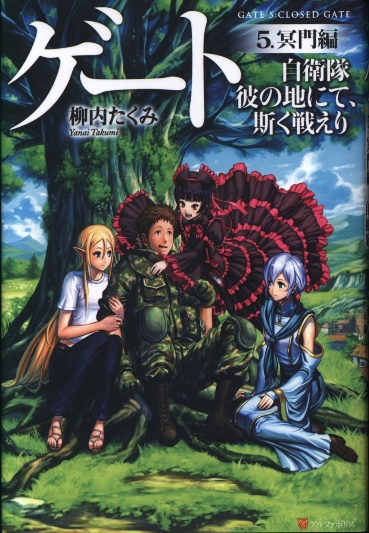
In November 2010, he also launched Eternity Bunko, a romance novel label targeting women in their 20s from junior and senior high school students.
With the development of the Internet, a trend of turning online novels into books was established.
The birth of Otome Road in Higashi-Ikebukuro
In May and June, KAC SHOP, a store specializing in new coterie magazines for women, and Volks, a store selling Super Dollfie ball-jointed dolls for women, opened in Higashi-Ikebukuro. In the fall, K-BOOKS, which deals in anime goods and doujinshi, declared it will no longer have doujinshi for men, but only for women. As a result, Higashi-Ikebukuro’s stores specializing in manga and anime began to focus more on women, and the area became known as “Otome Road,” a mecca for fujoshi.
The reason for this was that the concentration of male otaku products in Akihabara forced the stores to send their staff to Akihabara, who were familiar with these products, and as a result, it became difficult to handle products for men, so they had to focus on women. As a result, it became difficult to sell products for men, and the stores had to be geared toward women. Originally, Ikebukuro had many female customers.
2001 Moe’s Influence
Representative works

“Maburaho” by Toshihiko Tsukiji is published by Fujimi Fantasia Bunko.
In a parallel world where magic exists in Japan, three beautiful girls pursue the protagonist, an inferior student at a wizard training school. In fact, the protagonist has the blood of a famous wizard, and the three girls fight for the title of his wife in order to obtain his genes in this crazy love comedy. It was a harem story that pushed moe to the limit.
From this time on, a tendency to emphasize moe was born.
Trends in the novel world
The illustrator Komato Eji, who had been doing one-shot work for the bishojo game magazine “PC Paradise,” made his debut as a light novel illustrator with “Maburaho.”
Instead of the usual anime pictures, illustrations created by CG were used for the cover. However, the use of CG illustrations did not take root after that, probably because of the high cost.
One of the characteristics of Eji Komato’s illustrations is that he does not depict underwear on beautiful girls, even though their skirts are flipped up so much that it would be easy to see their underwear. This is commonly known as “pantyless”.
Toshihiko Tsukiji, the author of “Maburaho”, says in the afterword that the success of “Maburaho” was largely due to the work of Eji Komato.
Since then, it has been said that “the first volume of a light novel is sold by its cover illustration, and from the second volume on, it is sold by its contents.”
After his appearance, the covers of light novels became more and more moe-oriented in order to stimulate the subscriber base, and by the late 2000s, some fans began to complain that it had become difficult to buy novels.
Newcomer’s Award
Shueisha started the “Super Dash Novel Newcomer Award”. Award-winning works are published in the Super Dash Collection.
- The first grand prize winner was Akira Kamishiro’s “World Domination Story: Yuma’s Great Adventure” (published in 2002).
- The story is about a high school girl, Yuma, who enters the world of books and works hard to revive the demon gods (warumono). She is not a hero, but an agent of the demon god, and this work breaks the mold of the fantasy light novels of the 1990s.
Launch of a label
Kadokawa Shoten launched “Kadokawa Beans Bunko”.
- It is a fantasy label for girls. It started with the catchphrase, “The door to a story, the key to another world.”
Trends in otaku-related industries
Maid cafes were born.
The first permanent cosplay cafe in Akihabara, “Cafe de Cospa,” was relaunched as “Cure Maid Cafe,” the first maid cafe in Japan to unify waitresses’ uniforms with maid uniforms, after character content production company Broccoli transferred the management rights to cosplay costume production company Cospa. The café was renovated into “CURE MAID CAFE”.
The origin of “Cafe de Cospa” is “Pia Carrot Restaurant,” a coffee shop modeled after the restaurant in the popular 18-bit PC bishojo game “Welcome to Pia Carrot! The origin of maid moe is said to be the 18-forbidden PC bishojo game “Forbidden Bloodline” released in 1993. Maid moe has been gradually expanding its influence in light novels such as “Full Metal Panic!” (published in 1998), “Baka to Test to Shoukanjuu” (published in 2007), and “Ore no Imouto ga Konnani Kawaii Wake ga Nai” (published in 2008).
Influential historical background
On September 11, the terrorist attacks on the United States occurred. Commonly known as “9/11”.
A terrorist organization hijacked an airplane, rammed it into an American skyscraper, and caused it to collapse, just like in a Hollywood movie. This led the U.S. to push forward with the war against terrorism, with no way out in sight, and Japan came to support it. A new war between nations and terrorist organizations has arrived.
2002
Launch of a label
Media Factory launches “MF Bunko J”.
- It was created as a sub-label of “MF Bunko”, which has been dealing with translated works from overseas.
- Initially, it dealt with novelized works of anime and games, but after the hit of “Zero no Ususama” in 2004, it became a label for original novels.
- The label’s colors, which fully emphasized “romantic comedies” and “moe” that read the times, gained popularity, and the company began to boast a large market share.
- In 2011, it became a member of the Kadokawa Group.
Representative works

“KUBIKIRI CYCLE”, the first book in Ishin Nishio’s “Zaregoto Series”, was published by Kodansha Novels.
- Winner of the 23rd Mephisto Prize. It was recommended by the mystery novelist Seiryoin Ryusui.
- This work aims to combine “moe” and “mystery”, but with each series, the battle-like elements increase.
- The jokes mixed with the clever use of language and the attractive characters full of individuality made it popular.

Yashichiro Takahashi’s “Shakugan no Shana” [Burning-Eyed Shana] published by Dengeki Bunko.
- The series has sold more than 8.5 million copies.
- A high school boy leading an ordinary life gets caught up in a battle between monsters from another world and Shana, a beautiful girl who destroys them.
- This is a work that contrasts the ordinary with the extraordinary. The story is noteworthy for its moe elements, but the world view is hard, as the main character is eaten by a monster and dies at the beginning.

Takimoto Tatsuhiko’s “NHK ni Yokoso!” [Welcome to the NHK!] was published by Kadokawa Shoten.
Originally serialized on the website “Boiled Eggs Online” from January 29 to April 16, 2001, it was later made into a manga and anime.
The main character, Tatsuhiro Sato, who has been a shut-in for four years, is under the delusion that his situation is all the work of the evil organization NHK (Japan Shut-in Association), when a beautiful yandere girl, Misaki Nakahara, appears and starts a project to help him recover. This work is categorized as Sekaikei. The author, Takimoto Tatsuhiko, has experience as a recluse, and this is reflected in the setting of the main character.
Withdrawal among young people has been a social problem since the late 1990s, and psychiatrist Tamaki Saito published a new book titled “Shakai-teki Hikikomori” (Social Withdrawal) in 1998, which attracted a lot of public attention. It can be said that this work became a hit due to this historical background.
Trends in the Doujin Industry
In 2002, the doujin circle “07thExpantion” released “Higurashi no Naku Koro ni” to the world. It is the first work in a series of mysteries about a series of mysterious deaths and disappearances in a village that still retains the atmosphere of an old-fashioned village society. The heroine and heroine change, and the unique perspective and sound of sound novels are used to incite fear in the readers, making them think that it is actually a horror story rather than a mystery. The story is not a mystery but a horror story.
2013/04/12 by Tsukisae Yu
A pioneer of light novels about practical learning
In 2002, “The Case Book of a Female College Student Accountant” by Shinya Yamada, an accountant, was published in book form. Momi Fujiwara, an accountant specializing in corporate accounting and an active university student, uncovers the corporate fraud hidden behind the numbers. The book was originally serialized in the free paper of TAC, a preparatory school for CPA qualifications, and was self-published by the author. When it was published in paperback, many publishers offered to publish it, but Mr. Yamada, who has a deep knowledge of subcultures, decided to publish it at Kadokawa Shoten.
Mr. Yamada has since published several books on accounting from familiar situations, such as “Why doesn’t Saotakeya go out of business?” and many other non-fiction books that teach about accounting from familiar situations.
It may be said that he is the pioneer of light novels such as “Spice and Wolf” and “Moshi Dora” that teach real-life lessons.
April 12, 2013 by Tsukisae Yu
Trends in the Game Industry

In 2002, the Kyushu-based game company CyberConnect2 released “.hack//Infection,” an action RPG set in the world of online games.
A very ordinary junior high school boy is invited by his friend to play the online game “TheWorld” for the first time, and encounters the mysterious NPC Aura, who irregularly obtains his power. The main character plays the character “Kite” and makes many friends to solve the mystery of “TheWorld” in order to save his friend who was attacked by an unidentified enemy and became unconscious.
The game was made up of a four-part series, and was released every three months in a serial drama-like structure. Before and after the release of the game, a prequel anime was aired, a manga depicting the story several years later was serialized, and a special magazine was published. It may have been the beginning of cross-media.
2013/04/12 by Tsukisae Yu
Light novels are exported to Korea
A Korean publisher, Daewon C.I. Co., Ltd. will publish Korean-language versions of Japanese novels under the NT Novel label.
“Full Metal Panic!” “Sorcerer Orphen,” “The Chronicles of Delfinia,” and “Kino’s Journey” were sold in Korea that year, but they did not attract much attention due to the popularity of Korean fantasy novels in Korea at the time.
However, when the “The Melancholy of Haruhi Suzumiya” series was introduced in Korea in 2006, it became a huge hit, and the popularity of romance novels skyrocketed. Perhaps in response to this, Korean authors began to produce Korean-made novels in 2006.
One of the reasons for the popularity of Korean novels is thought to be that the manga and anime industries in Korea were not growing due to government regulations and copyright infringement issues, and people were importing Japanese manga and anime to become familiar with Japanese otaku culture.
Surrounding circumstances that had an impact
The arrival of the cell phone novel boom.
“Deep Love”, a cell phone novel serialized on Yoshi’s personal website “Zabun”, was published by Starts Publishing. The series becomes a hit, selling a total of 2.7 million copies.
2003
Representative works

“The Melancholy of Haruhi Suzumiya”, the first book in Nagaru Tanigawa’s “Haruhi Suzumiya” series, was published by Sneaker Bunko.
It won the Grand Prize at the 8th Sneaker Awards. Released in 15 countries around the world, the series sold over 16.4 million copies in total, making it a record-breaking hit in the 2000s. Although it did not attract much attention when it was first published, it gradually gained popularity and became a big hit when it was made into a TV anime in April 2006.
Haruhi Suzumiya, a high school girl, spends her days in a festive atmosphere, involving the main character and creating the SOS Club to find and play with aliens, future people, and psychics. The story contains both science fiction and philosophical elements, and depicts the contrast between the ordinary and the extraordinary. The humorous first-person narrative of the protagonist (narrator) Kyon was also appealing.
With the success of the Haruhi series, the idea of the heroine creating a strange club activity and involving the hero in it became one of the mainstays of novels.
The Melancholy of Haruhi Suzumiya” was also released in China and became a hit, leading to the spread of light novels in China from the late 2000s. In China, light novels are called “light novels”. [軽小説 / 輕小說]
Narita Ryogo’s “Baccano! was published by Dengeki Bunko.
It won the Gold Prize at the 9th Dengeki Game Novel Award in 2002, and the series was launched the following year in 2003.
Set against the backdrop of the 1930’s, a time when prohibition was in effect and the mafia was running rampant, this is an ensemble drama with an alchemist, a homunculus, a couple of robbers, a terrorist, and other characters with their own quirks.
He also likes ensemble dramas with unique characters and B-movies, and seems to have adopted them into his style.
With the same worldview, “Durarara! Vamp” is also a continuing series, and has been adapted into comics and films.
Narita has also written spin-offs of properties such as “Fate/StayNight”, BLEACH, and “Toaru Kagaku no Railgun”.

Asai Labo’s “Saredo Tsumibito Wa Ryuu To Odoru” [Dances with the Dragons] published by Sneaker Bunko. The work won the 7th Sneaker Grand Prix.
The story has attracted a lot of attention for its descriptions of spells (magic) using chemical jargon, its settings, and the tongue-in-cheek exchanges between the characters.
It is also characterized by a storyline that is hardly suitable for junior high and high school students, with hard descriptions of cruelty, sexual expression, and depressing developments. It has also been called the “originator of dark light novels.”
In 2008, he moved his works to Gaga Bunko.

“Bludgeoning Angel Dokuro-Chan” by Masaki Okayu was published by Dengeki Bunko.
Initially, the editorial department considered it a problematic work, but when it was published as a short story in Dengeki hp, it was voted by readers as a favorite and was published as a paperback.
The story is a parody of Doraemon, in which the main character is harmed by the skull-chan, who is originally a savior.
Crossing the border into general literature

Ubukata Tow’s “Mardock Scramble” is published by Hayakawa Bunko JA. It won the 24th Japan Science Fiction Award.
Ballot, a young prostitute, is almost killed by Shell, a gambler who uses her for his crimes. Severely injured, Barot is saved by a technological body modification forbidden by the Mardock Scramble 09 law. This gives her special abilities, and she pursues Shell’s crimes with Ufcock and the Doctor who saved her.
It is a cyberpunk worldview, but deals with themes directly related to social issues of the time, such as money laundering, abuse, and family breakdown. It’s a heavy story for a light novel.
For this reason, Ubukata tried to get it published by several light novel labels, but they were not interested in it.
Books related to light novels

The first light novel how-to book, “How to Make a Character Novel” by Eiji Otsuka, is published.
- In this book, the term “light novel” was not yet used.
First issue of a magazine
Kodansha publishes the first issue of “Faust,” an irregularly published literary magazine. The catchphrase was “Fighting Illustrated Novels Magazine.”
The magazine starts with three Mephisto Award winners, Otaro Maijo, Tomoya Sato, and Ishin Nishio. Critic Hiroki Azuma and critic Tamaki Saito will also be featured. In addition, writers such as Otsuichi, Takimoto Tatsuhiko, and Kitayama Takekuni, as well as highly acclaimed scenario writers in the bishojo game industry, Nasukinoko and Ryuukishi07, also participated in the magazine, making it popular as a comprehensive magazine by popular young writers in the fields of authentic mystery, light novels, bishojo games, and criticism. Light novelist Kohei Kamieno had a great influence on the establishment of Faust.
In 2008’s Vol. 7, science fiction giant Yasutaka Tsutsui wrote a light novel called “Bianca Overstudy,” which had the catchphrase “a girl who leaps through time in the 21st century.”
It became a bridge between light novels and general literature, and is said to have been one of the factors behind the light novel boom.
Trends in the Manga Industry
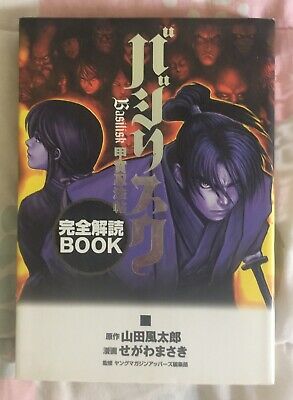
The manga “Basilisk: The Koga Ninja Scrolls” by Masaki Sesegawa was serialized in “Young Magazine Uppers” (Kodansha) from 2003 to 2004, and was made into an anime in 2005.
Based on the novel “Koga Ninpocho” by Futaro Yamada, which was serialized in “Hakuho Club” (Kobunsha) from December 1958 to November 1958, and published in book form in 1959. Ten ninja from the Iga and the Kouga clans face off to decide who will be the third shogun of the Tokugawa family. Oboro, granddaughter of the head of the Iga clan, and Gennosuke, grandson of the head of the Kouga clan, are in love with each other and have even talked about marriage, but they are forced to fight each other as sworn enemies.
Author Baku Yumemakura said, “Yamada Futaro was the first to include an element of team confrontation in his stories, and his influence on the manga world is immeasurable.
Not only that, but the techniques of the ninjas in this work have reached the realm of what could be called extraordinary abilities, and it can be said to be the originator of ability battles in which victory or defeat is determined by the compatibility of the abilities of the ninjas. Oboro, for example, has no physical skills as a ninja, but he was born with the “eyes of destruction” that nullify all ninja techniques just by looking at them. Gennosuke possesses the “Pupil Technique” which allows him to return the techniques of those who attack him with harmful intentions to their opponents. For this reason, it was said in the manga that Oboro was the only one who could defeat Gennosuke. However, in reality, Gennosuke is poisoned by the shimmering fire that Gennosuke is in love with, and this shows the unexpected weakness of the pupil technique that was thought to be invincible.
The original work is a historical novel, but the interesting team battle and ability battle is still relevant in the 2000s, and it won the 28th Kodansha Manga Award in the general category.
2004: The advent of the light novel boom
Representative works
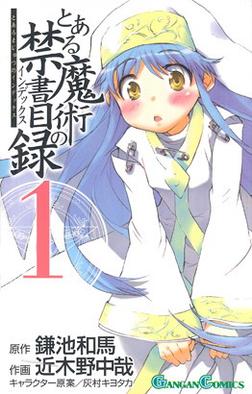
In April, “A Certain Magical Index” by Kazuma Kamaike was published by Dengeki Bunko. It was a huge hit with a total circulation of over 13.4 million copies.
It is a shonen manga-style battle action story with a hot-blooded protagonist that packs science fiction and fantasy elements into a school city setting. The protagonist is a psychic of the lowest rank, but in his right hand, he has the “Imagine Breaker,” a power that cancels out all psychic and magical powers. He is famous for his line, “I’ll kill that illusion.” However, he can never erase the fantasy that a beautiful sister will fall from the sky and start living with him.
There have been works that combine science fiction and fantasy, but this work is the culmination of them all.

Yamaguchino Noboru’s “Zero no Tsukaima” [Grimoire of Zero] is now being published by MF Bunko J. The series has sold a total of 4.5 million copies.
The protagonist, a young boy named Sight, is summoned to another world as a messenger demon. He is summoned by a beautiful girl, Ruiz, who is an inferior student at a magic school. She calls him “dog” and treats him like a servant, and soon he is involved in battles and adventures that shake the world.
Compared to the fantasy novels of the 90’s, the world view and magic settings are designed to be easy to understand, and the romantic comedy and light-hearted story are appealing. The main character is irresistible to all the girls.

Kinoko Nasu’s “Kara no Kyoukai” [The Garden of Sinners] was published by Kodansha Novels and became a hit, selling over 700,000 copies.
- It was originally a web novel that was published on the website of a doujin circle in 1998. Later, it was sold as a doujin magazine at Comiket and became popular, catching the attention of the editors of Kodansha.
- This is the first novel to be turned from a doujin or web novel into a commercial work and a hit.
- It shares the same worldview with “Tsukihime” and “Fate/stay night”.
After this, bishojo game scenario writers began to attract attention as light novelists with immediate ability, and famous scenario writers such as Romeo Tanaka and Gen Urobuchi made their debut.

The “Secrets of Haruka Nogizaka” by Yusaku Igarashi was published by Dengeki Bunko.
The story is about a beautiful young girl heroine who is an Akiba-style otaku and is desperately trying to hide it.
This setup was later used in “Ore no Imouto ga Konnani Kawaii Wake ga Nai” (My Little Sister Can’t Be This Cute!), and produced one of the most popular heroines.
Books related to light novels
The first book on light novels, “Light Novel Complete Reader” was published by Nikkei BP.
The first light novel commentary book, “Light Novel Complete Reader,” was published by Nikkei BP, and the name “light novel” became a household name.
Since then, light novel commentaries and how-to books have been published one after another, accelerating the light novel boom.

Takarajimasha published the 2005 edition of the light novel guidebook “Kono Light Novel ga Sugoi!” (This Light Novel is Amazing!) The 2005 edition will be published in December.
The 2005 edition of the guidebook was published by Takarajimasha in December 2005, attracting attention for its ranking of light novels in terms of popularity.
It became a series and was published once a year in December.
Launch of a new label
Gakken launched “Megami Bunko”.
- The catchphrase was “Read and Moe! It started as a label for anime novelization works with the catchphrase “Read and Moe!
- In 2008, the “Megami Novel Award”, a newcomer award for light novels, was launched, and the label began to focus on publishing original novels.
- In 2008, the label started the “Megami Novel Award”, a newcomer award for light novels.
Mag Garden launched “Mag-Garden Novels”.
- Mag Garden launched “Mag-Garden Novels”, a light novel label for new books.
- Mainly novelizes manga works from “Monthly Comic Blade”.
Trends in the light novel industry
Media Works President Tatsuo Sato, who founded Dengeki Bunko, said in an interview for the book “The Complete Light Novel Reader” that “I have the impression that a large number of teenage girls are entering the market these days,” and that the number of teenage female readers is increasing at Dengeki Bunko.
On July 15, Nao Yoshida, who published the popular “Trinity Blood” series at Sneaker Bunko, passed away due to a pulmonary infarction. As the series was published under the strict condition that it would be terminated immediately if its popularity declined, there were whispers that he died of exhaustion.
Light novelists work very hard, and it is not uncommon for popular authors with huge workloads to fall ill.
Trends in the manga industry

The four-frame manga “Lucky Star” by Kagami Mimizu was published in the game magazine “Comptiq”.
This is a gag manga depicting the loose routines of otaku high school girls. The manga was so popular that it became a problem for fans who made a pilgrimage to the shrine where it was set.
The style of beautiful girls having a good time talking about otaku culture has also influenced light novels, giving birth to such hits as “Student Council”, “My sister can’t be this cute!”, and “Boku wa Tomodachi ga Sukunai”.
However, since this style can be copied by anyone, it became saturated in manga and light novels in the 2010s.
(The novelization “Lucky Star Murder” was published by Kadokawa Sneaker Bunko in September 2007.)
Trends in the Bishojo Game Industry

The PC novel game “Fate/stay night,” for which Kinoko Nasu was in charge of the scenario, was released.
The game is about a battle royale to obtain the Holy Grail, with the main character supporting a messenger of a beautiful girl. The game was an explosive hit and became a media mix.
During this period, stories with a structure in which girls fight and the main character, a boy, assists them became popular, such as “Shakugan no Shana,” “The Melancholy of Haruhi Suzumiya,” and the manga “Rozen Maiden” (published in 2003).
The protagonist of this work was initially powerless and dragged the girls down, but eventually grew to the level of defeating the last boss in a one-on-one battle, which was innovative.
Trends in the publishing industry
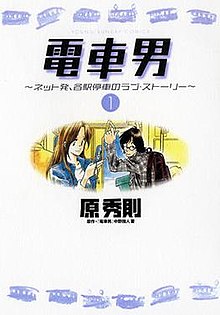
Shinchosha published “Densha Otoko” (Train Man), a bestseller that sold over a million copies and was made into a manga, a movie, and a TV drama.
It is a love story that begins when an Akiba-style otaku rescues a woman from a drunk driver on a train. There was no specific author, and the story unfolded as the residents of 2channel wrote advice to help the awkward “Densha Otoko” achieve romance, and the Densha Otoko reported the progress of his love life and asked for more advice. This story became an explosive boom on the Internet from the end of May, and was published as a book in October.
This is the first example of a content-oriented media being born from a communication-oriented media. It is pointed out that the fact that advice on the Internet is influencing real-life relationships is a sign that young people are enjoying the Internet as a natural part of their lives and building a new worldview.
However, “Densha Otoko” contains a message that it is right to graduate from being an otaku and become a popular guy, and Toru Honda, who was repulsed by this message, criticized it fiercely in his book “Denpa Otoko” the following year.
2005
Launch of a label
Konami Digital Entertainment launched “KONAMI NOVELS”.
- It is a light novel label.
- It publishes novelizations of games, anime, special effects, and original novels.
- It is characterized by the use of speech balloons and panel divisions in its illustrations.
Trends in the novelization industry
Tohru Honda, the administrator of the otaku website Shirohata, publishes a book titled “Denpa Otoko” from Sansae Books. In the book, Toru Honda says that modern society has been poisoned by the idea of “love capitalism” since the 1980s, and that “moe culture” has developed as a counterculture to it.
Love capitalism is a system in which both men and women must spend money to be popular with the opposite sex throughout their lives, and those who fall out of this system are discriminated against as otaku, kimo-men, or NEETs. There is no love there, and true love is found in romance with two-dimensional beautiful girls who are the embodiment of ideas.
In this book, Toru Honda complained, “I wanted to be a romance writer more than I wanted to have a girlfriend. This desire came true, and in October of the same year, Super Dash Bunko published “Astro! Otome Juku!” in October of the same year.
This book and author symbolizes the fact that light novels have somehow come to be associated with moe.
Trends in the Otaku Industry
Nomura Research Institute is publishing a book titled “Research on the Otaku Market” from Toyo Keizai Inc.
The otaku market has grown into a huge industry worth 410 billion yen, and is even forming overseas markets. This is the first book by Nomura Research Institute to seriously analyze the otaku market, noticing that Japanese culture is now characterized by “wabi”, “sabi” and “moe”. Until then, the otaku market had been ignored as a niche existence.
2006
Launch of a new label
Softbank Creative launches “GA Bunko”.
- The catchphrase was “Super Generation Adventure.”
- It publishes not only novels for boys, but also those classified as girls books.
- It is also unique in that it publishes books based on online novels.
Hobby Japan launched “HJ Bunko”.
- Hobby Japan launched “HJ Bunko” and at the same time started “Novel Japan Award” (renamed to HJ Bunko Award in 2011) as a place to discover newcomers.
- It also started “Novel JAPAN” as a related magazine, but it ceased publication after the March 2009 issue.
- The first issue of the magazine was immediately followed by overseas expansion, and an exclusive contract was signed with Taiwan’s Dongli Publishing House.
- It is a label with an erotic moe line, incorporating many authors from juvenile pornography.
Enterbrain launched “B’s-LOG Bunko” (B’s-Log Bunko).
- It is a label for girls.
Takeshobo launched “Zeta Bunko”. (~2007)
- It was an original novel-only label with a different policy from the company’s “Gamma Bunko”, which was discontinued in 1997.
- It was discontinued the following year.
Newcomer’s Award
Shogakukan established the “Shogakukan Light Novel Award,” a newcomer award for light novels.
It was a newcomer’s award to discover newcomers for “Gaga Bunko” and “Lulu Bunko,” which were to be launched the following year.
Representative works

“Spice and Wolf” by Isuna Hasekura was published by Dengeki Bunko. The work won the Silver Prize of the 12th Dengeki Novel Award. The series became a hit, selling more than 4 million copies in total.
With a peddler as the main character, this is a “light novel that you can study” where you can learn about bargaining among merchants and economics. I was very surprised at the time that exchange rates were heavily involved in the story. The witty conversations between the main character and Holo, a beautiful girl with wolf ears and tail, are fascinating. Many of Holo’s wise words can be applied in the real world.
Light novels have been thought of as a useless hobby to pass the time, but this is the first time that a story that uses moe to teach us “practical learning” has appeared.
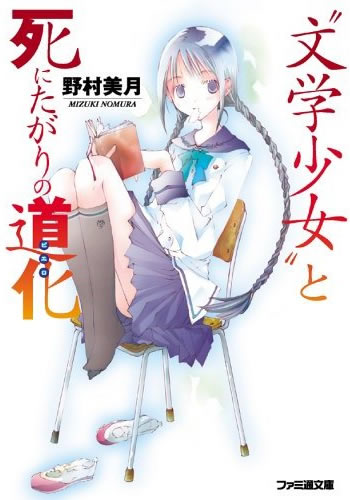
The first book in Mizuki Nomura’s “Bungaku Shoujo” (Book Girl) series, “‘Bungaku Shoujo’ and the Clown Who Wants to Die,” will be published by Famitsu Bunko.
The story centers on a literary novel, and unfolds as if following it. In the first volume, Osamu Dazai’s “Ningen Shikkaku” has been chosen as the theme, so that readers can learn about literature while reading the novel.
The main character and Tohko Amano, a genuine literature girl who loves books, get involved in various cases and solve them.

In March, Yuyuko Takemiya’s “Toradora! was published by Dengeki Bunko. The series has sold over 3 million copies.
It is a romantic comedy that depicts the pain and sadness of heartbreak. It was pointed out in the book “Light Novel Literature Theory” by Aki Enomoto that this work brought the story structure of shoujo manga into light novels for boys.
The main character, Ryuji Takasu, is misunderstood as a delinquent because of his father’s scary eyes, and he has a complex about this. This setting is thought to have influenced the 2009 hit “Boku wa Tomodachi ga Sukunai.”

Amagi Shusuke’s “Chrome Shelled Regios” was published by Fujimi Fantasia Bunko. The series is a hit, selling over 4 million copies.
It is a “school action fantasy” set in the mobile city of “Regios,” which moves through the contaminated land that has become uninhabitable for living creatures. The apocalyptic science fiction worldview is interwoven with Western fantasy elements such as monsters and spirits, and Eastern fantasy elements such as a martial artist who manipulates “kei.”
The protagonist, a young boy named Rayfon, used to be one of the best martial artists in the world, but he was expelled from his hometown for committing a crime. In order to find a new path, he enrolls in the school city and once again wields his power as a martial artist to protect his friends.
The story is heavy, but it is also filled with harem-like school romantic comedy elements, funny conversations, friendship with friends, and exhilarating battles. It is a work that takes all of the elements that have been present in novels for boys and blends them well.
Surrounding circumstances that influenced this work
The cell phone novel boom was at its peak.

Mika’s cell phone novel “Koizora” [Love Sky] was published by Starts Publishing and became a bestseller, selling over 1.4 million copies.
The mobile phone novel boom continued until about 2008, when a number of other books were published and attracted much attention.
During the boom, it was seen as a rival to light novels, and the romance world was worried that it would compete for customers, but since the readership consisted of yankee teenage girls who were not into the habit of reading books, it did not have much of an impact.
In the 1990s, the publishing industry thought that geeks did not read books, but light novels became widely popular. The same can be said for mobile novels, which opened up a new audience that the publishing industry had not seen before.
Since the boom, the number of mobile novels with fantasy elements has been increasing, and it is pointed out that the boundaries between them and light novels have become blurred.
2007
Launch of a label
Shogakukan launched “Gaga Bunko”. For boys.
- This is a label with a challenging spirit that will take up works with an experimental style.
- It is said that the label emphasizes the development of newcomers.
Shogakukan launched “Lulu Bunko”. It is a sister label of Gaga Bunko and is aimed at girls.
- It is the successor to the discontinued Palette Bunko, Canvas Bunko, and Super Quest Bunko.
Harvest Publishing launched “Nagomi Bunko”.
- It publishes gaiden novels of bishojo games. This is an “all ages” paperback.
Gakken Publishing launched “Moegi Bunko Pureri”.
- A light BL and Otome-type (shoujo-ish) paperback for teenage girls.
Fujimi Shobo launched “Style-F”.
- Fujimi Shobo launched Style-F, a light novel label that uses soft covers instead of paperbacks. There are no illustrations, and the target age range is slightly higher.
- Initially, a newcomer’s award was planned to be held, but in the end it was not held.
Houbunsha launched Houbunsha KR Bunko.
- It published novelizations of manga serialized in the company’s moe four-frame manga magazine, Manga Time Kirara.
- However, the company stopped its activities after only half a year, and as of April 2012, there has been no new publication.
Representative works
“Baka to Test to Shokanjuu” [Baka & Test – Summon the Beasts] by Kenji Inoue was published by Famitsu Bunko. The series was a hit, selling over 5.3 million copies in total.
The strength of the summoned beast is determined by the test scores, and winning the summoned beast battle between the classes results in a “facility swap” with the opposing class, a novel setting that gained popularity. The protagonist is an inferior student in Class F, where all the failures of the school are gathered, but in order to improve the worst facilities into something gorgeous for the girl he loves, he fires up his bad friend, the leader of the class, and challenges the superior students to a battle.
The protagonists use their wiles and energy to win against an unwinnable enemy. The way they do so is very interesting, and the book is full of gags and humor that will make you laugh. An unusually funny gag novel.
Literature Award
Dengeki, Sneaker, Fujimi Fantasia, and Famitsu, which are all affiliated with the Kadokawa Group, hold the Light Novel Award, a literary award for light novels. There were three categories: romantic comedy, school, action, mystery, and novelization, and the grand prize was decided by readers’ votes.
It is interesting to note that there is no “Science Fiction Division” or “Fantasy Division.”
2008
Representative works

“Ore no Imouto ga Konnani Kawaii Wake ga Nai” (My Little Sister Can’t Be This Cute!) by Tsukasa Fushimi was published by Dengeki Bunko in August, and became a hit, selling over 4.1 million copies, and was developed into a media mix.
It is different from the traditional moe-oriented sister stories in that it depicts a realistic relationship between siblings. The theme of the story is about rebuilding trust with a younger sister who has grown cold.
The character of Kirino, the heroine, who is a junior high school girl but loves erotic games featuring younger sisters, stands out.
This work was a breakthrough in the technique of having a beautiful girl who is a serious otaku and makes the protagonist, who is a light otaku, lose his mind.
After this work, the number of titles with the word “sister” in the title and colloquial titles increased. (2010/8), “It’s my brother, but it doesn’t matter as long as we love each other” (2010/12), “Ore ga kanojo ni sore ni sore desu?” (2012/2), etc.

In January, Aoi Sekina’s “Student Council no Ichizou” [Student Council’s Discretion] was published by Fujimi Fantasia Bunko.
This work combines a harem story with a gag parody and a metafictional device. It is characterized by a comical short story format that will not bore readers, making it easy to read and enjoy even when you are tired.
It was an adventurous work for the editorial department, but it turned out to be an unexpected hit.
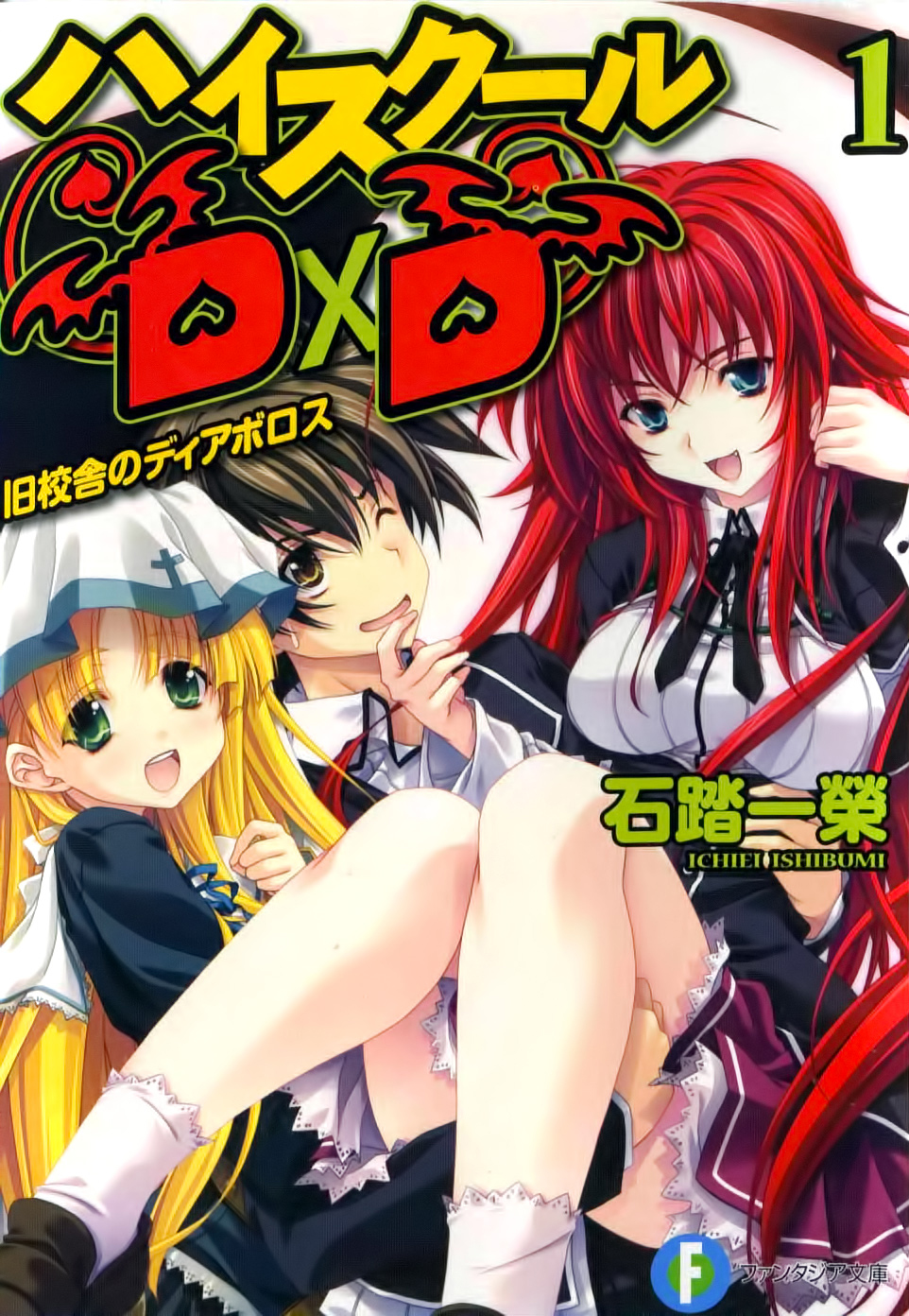
In September, “High School DxD” by Isakae Ishitani was published by Fujimi Fantasia Bunko.
The protagonist, Issei Hyodo, is a high school boy who is stupid and loves boobs. When he finds out he has a girlfriend for the first time in his life, she is an assassin of a fallen angel who has appeared to eliminate the dangerous divine device that resides in Issei’s body. After being killed, Issei is resurrected as a servant of the beautiful demon Rias Gremory, and joins the occult research club headed by her, where he and his friends face various enemies.
For a light novel, there is a lot of eroticism, but the story is a royal shonen manga of friendship, hard work, and victory. Issei makes full use of the Red Dragon Emperor’s Baskets, his most powerful weapon, but with many flaws and side effects, to face enemies far more powerful than himself.
After this work, the erotic expressions in light novels (especially the illustrations) became more extreme. In the first volume of this book, an illustration of a naked girl is proudly depicted, which probably means that it was decided that it was okay to go this far.
Crossing the border to famous authors and general literary fiction
Kazuki Sakuraba won the 138th Naoki Prize for his novel “My Man.”
He was the first writer from a light novel background to win the Naoki Prize, which attracted much attention.
Since then, light novels have been treated as a training ground to become a general literary writer, and are often mentioned in newspapers.
Newcomer’s Award
In February, GA Bunko launched the “GA Bunko Grand Prize,” a new light novelist award.
Printed out manuscripts were no longer required, and submissions were accepted in the form of recorded media containing text data.
The first grand prize winner, Manta Aizora’s “Crawling! Nyaruko-san,” which won the first grand prize, became a hit and became a representative work of the label.
At the same time, the GA Bunko Theme Grand Prix was established to accept short stories based on keywords, but this competition ended after the first issue.
Launch of a label
Visual Arts, a game company, launches VA Bunko, which mainly deals with novelization of romance games.
Ichijinsha launched the Ichijinsha Bunko.
- It mainly focuses on original novels, but also publishes novelizations of manga, games, and anime.
- At the same time, the light novel newcomer award “Ichijinsha Bunko Taisho” is launched. At the same time, it started the light novel newcomer award “Ichijinsha Bunko Grand Prix”, which also serves as the newcomer award for its sister label, Ichijinsha Iris Bunko, and has two divisions: the Ichijinsha Bunko division and the Ichijinsha Bunko Iris division.
Ichijinsha launched the Ichijinsha Iris Bunko.
- A light novel label for girls.
- It mainly focuses on original novels, but also publishes novelizations of manga and games.
Influential historical background
The iPhone 3G, a smartphone manufactured by Apple Inc. was released in Japan in July, and smartphones became widespread.
Smartphone applications, social games provided by smartphones and cell phones such as Mobage (launched in 2006) and GREE (launched in 2005), and web services such as Nico Nico Douga (launched in 2007) grew, and became a threat to light novels as competitors to manga, anime, and games.
Smartphones have also been attracting attention as “e-book terminals” since the early summer of 2010.
2009
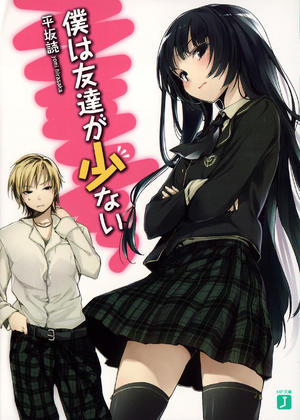
Representative works
“Boku wa Tomodachi ga Sukunai” [aka Haganai, or “I Don’t Have Many Friends”] by Yomi Hirasaka is published by MF Bunko J. It is a hit work that has sold over 4 million copies.
The story is about a group of characters who are not good at human relations, who form a club to make friends, and play together despite repeated conflicts. The catchphrase was “regrettable adolescent romantic comedy,” and it was an innovative work that reflected the current situation where young people are struggling to build relationships.
It was characterized by a lot of somewhat vulgar vulgar jokes.
After this, more and more works were categorized as “disappointing youth romantic comedies.”
Reki Kawahara’s “Sword Art Online” was published by Dengeki Bunko and became a hit, selling over 2.3 million copies.
This is a book version of an online novel that has been serialized on the author’s website since 2002. The author won the grand prize of the 15th Dengeki Novel Award in 2008 with “Accel World”, which caught the attention of the editor and led to the commercialization of the work.
The story is set in an online game in the near future. The story is set in an online game in the near future, and depicts a death game where death in the game leads to death in real life.

In May, Yugen Izuru’s “IS [Infinite Stratos]” was published by MF Bunko J. It was a hit, selling over 1.35 million copies (at the time of the release of the 7th volume).
The main character is Ichika Orima, the only boy in the world who can pilot the ultimate weapon “IS,” which can only be piloted by women. He enters the IS Academy, a school for training IS pilots where only girls are allowed, and leads an extremely popular life where he spends his days battling as an IS pilot with the strongest attack power.
Crossing over from general literature

Natsumi Iwasaki’s “Moshi Koukou Yakyuu no Joshi Manager ga Drucker no ‘Management’ wo Yomoto Datara” (‘If a High School Baseball Girl Manager Reads Drucker’s ‘Management’) was published by Diamond Inc. and became a bestseller, selling over 2.55 million copies, and was made into a live-action movie and anime.
It is a general literary novel with a cover illustration of a beautiful girl with a touch of moe in the style of light novels. Gorgeous color illustrations are also inserted inside the book.
The story is about a high school girl who reads “Management”, a compilation of Drucker’s business administration, and applies it to her high school baseball team to make their activities stronger and aim for the Koshien Championship. The story was supported by a wide range of readers because it had material that could be accepted by the older generation, such as baseball, and also because it could be read as an introductory book on business administration with beautiful moe girls.
Some readers saw this work as a light novel, and it can be said that this work crossed the border from general literature to light novels and introduced new techniques.
Launch of a new label
In December, ASCII Media Works (Kadokawa Group), which owns Dengeki Bunko, launched “Media Works Bunko”.
This is a paperback for people who have graduated from light novels. It will publish works that are somewhere between general literature and light novels. The cover is an anime-style illustration in the style of light novels, although it has almost no moe elements, and there is one color illustration on the front cover. At the same time, the “Media Works Bunko Award” was newly established as a division of the Dengeki Novel Award starting with the 16th edition.
It is predicted that the number of teenage boys and girls, the main target of novels, will decrease due to the declining birthrate and non-marriage rate among young people. Poverty is also spreading among children (a new book titled “Kodomo no Hinkoku: Nihon no Inequity wo Kangaeru” was published in 2008).
Newcomer’s Award
Takarajimasha started the Light Novel Newcomer Award and the “Kono Light Novel ga Sugoi! Grand Prize.”
- This award was created from the mook “Kono Light Novel ga Sugoi!”
- The award-winning works will be published in “This Light Novel is Amazing! Bunko,” which was first published in 2010.
- The inclusion of light novel-related website operators on the final selection committee was a novelty.

